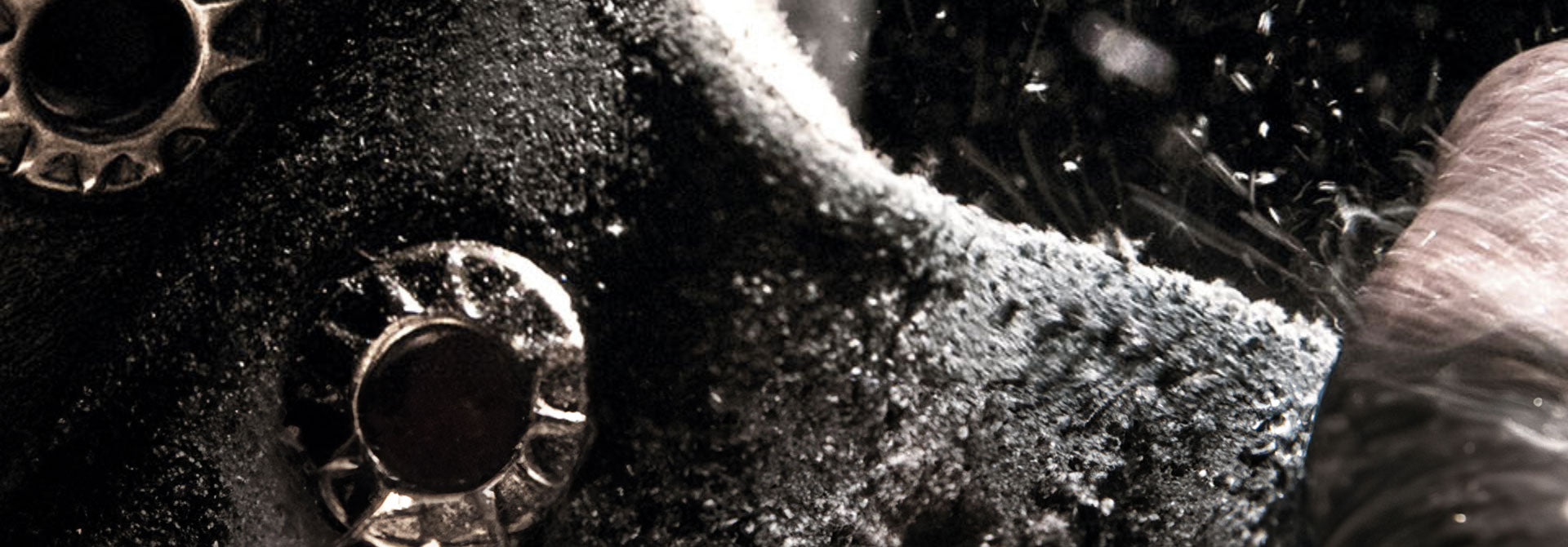It's good practice to get into the habit of cleaning off mud and dirt off the boots as soon as you come back from a walk. It's the mud drying into the leather can cause a lot of damage in the long term. Giving the boots a rinse under running water as soon as possible, and use a stiff brush to get rid of any dirt. You can use the LOWA Shoe Care Brush or something like an old toothbrush can also be effective. Make sure the boots are dried thoroughly afterwards, away from direct sunlight or a heat source like a radiator, as this can damage the leather and make it more brittle. A dry, well ventilated room would be ideal to leave the boots to dry in. If the dirt is full engrained into the leather and cannot be got out with a brush and water, then you can use the LOWA Shoe Clean. It doesn't need to be used after every walk though, as the brush and water should be enough.
TREATING THE LEATHER
The boots should always be treated after using a boot care product like the Shoe Clean. If the boots have just been cleaned with water and a brush, ideally they should be treated after every 4-5 walks in order to keep up a good level of repellence. A little and often treatment of the leather is better than an occasional one-off blitz and is important to do as poorly maintained leather will begin to dry out and crack, which cannot be fixed. Treating the leather will help to nourish the leather and keep it nice and supple, along with helping to keep the leather repellent for as long as possible. The boots should be slightly damp when you apply a waterproofing spray like the LOWA Waterstop Eco, as the leather's pores will open up and allow the spray to impregnate deeper. Afterwards, you can then treat them with a wax paste or cream, like the LOWA Active Creme to help to look after the leather. If you have synthetic areas on the boot, there's no need to treat these with Active Creme, but you can still use a Waterproofing spray on these areas.
Periodically, it can also be a good idea to clean the inside of the boots to remove any muck that builds up over time. It will allow the boots to breathe properly, and help to avoid any damage to the leather from occuring inside the boot. Just take the insoles out, fill the boots up to near the top of the Gore-Tex membrane with warm water and leave them for an hour or so. After that time, you can pour away the water, give them a quick rinse, and then leave them to dry. Leave the boots in a well ventilated room, away from a heat source and it will take about 48-72hrs to dry fully. You can stuff the boots with newspaper or a paper towel etc., to help draw out some of the moisture.
STORING THE BOOTS
When not using your LOWA footwear, they should be stored in a box or shoe bag in a dry, well ventilated environment. A wooden shoe tree (or stuffing the boots with dry newspaper) can also be used to help the leather maintain it's shape over time.


